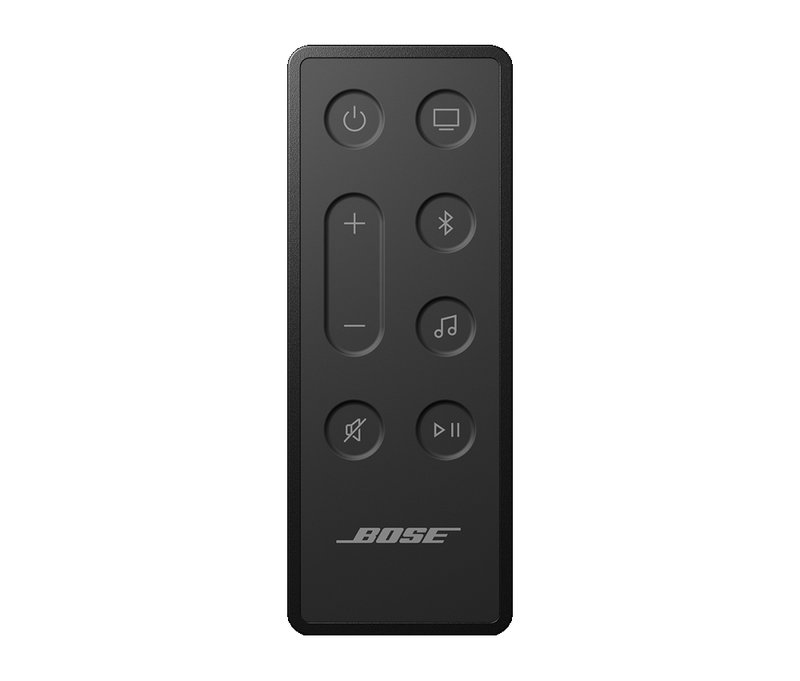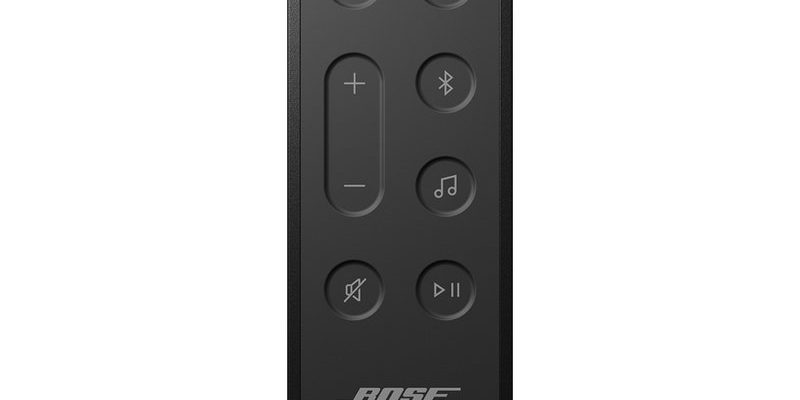
Honestly, you’re not alone. The question of whether *Bose soundbar remotes* can work directly with smart TVs is on a lot of minds, especially when the goal is less tech juggling and more couch lounging. Bose makes remotes that look simple enough, but pairing them with your fancy TV isn’t always plug-and-play. Let’s cut through the confusion, break down how this remote works, how it “talks” to different TVs, and what you can (and can’t) expect when mixing Bose soundbars with today’s smart TVs.
How Do Bose Soundbar Remotes Communicate?
First things first: most standard Bose soundbar remotes rely on *infrared signals* (IR) to connect. Imagine them like invisible flashlight beams—when you point the remote at your soundbar, it sends specific “codes” as flashes of light for commands like volume or source. Old-school, but it gets the job done, as long as there’s a clear line of sight.
Some newer Bose remotes, especially the ones bundled with premium models (think: the Bose Universal Remote or Bose Soundbar 700 remote), also use *Bluetooth* or *radio frequency* (RF) for more advanced pairing. This opens up some extra magic—like controlling devices hidden away in cabinets or across the room.
But here’s the catch: most smart TVs these days have their *own remote systems,* often mixing IR with Bluetooth or proprietary platforms like Samsung’s One Remote. So the big question becomes whether these two gadgets “speak the same language,” or if you need to teach them a few new tricks using *code* syncing or pairing.
The Basics of Bose Soundbar and Smart TV Compatibility
Here’s the thing: *Bose soundbar remotes are designed, first and foremost, for Bose products*. Most smart TVs (Samsung, LG, Sony, Vizio—you name it) have their *own* remotes tailored for their own menu systems and apps. So, if you grab your Bose remote and start jabbing at your smart TV, chances are…nothing happens.
Why? The Bose remote sends out specific IR codes meant for Bose hardware—not your TV’s input selection or Netflix app. If you’ve ever tried to change inputs or adjust TV settings with your Bose remote, you know that frustration. It’s like trying to unlock your car with your neighbor’s key fob. No dice.
That said, some Bose remotes—especially the universal ones—are *programmable*. You can sync them to control certain smart TV functions (volume, power, input switching) by entering the correct TV code. This is where things get interesting and maybe a little complicated, but it’s doable if you follow the steps (no tech wizardry required, I promise).
Syncing and Pairing: How to Get Your Bose Remote to Work With a Smart TV
You might be wondering, “Okay, so my Bose remote isn’t instantly controlling my smart TV. What now?” Here’s what usually works:
- Find the TV code: Bose provides hefty lists of TV codes in their manuals or on their website. You’ll scroll through and find the code that matches your TV brand.
- Enter pairing mode: On most universal Bose remotes, hold down a combo of buttons (often “TV” and “Setup”) until a tiny light blinks. It’s like teaching your remote a new dance move.
- Type in the code: Using the number buttons, enter the code for your TV. The remote’s light might flash a confirmation, or you test the power button to see if it works.
- Test and troubleshoot: Sometimes, the first code won’t be a perfect fit. Run through the next code in the list and try again.
It feels a bit like playing Mastermind with electronics, but once you crack the code, you can power on/off your TV, adjust the volume, and even switch inputs—all from your Bose remote. If you run into any “Why won’t it sync?!” moments, don’t panic. Double-check the remote’s batteries (yep, a weak battery can throw it all off), or try *resetting* the remote by pulling the batteries for a few seconds.
Common Problems and Troubleshooting Tips
Let me tell you, even after you think everything’s paired up perfectly, you might hit a snag. Maybe you get volume to work, but the input won’t change. Or your smart TV is happily following commands, but now your soundbar’s gotten quiet. Here’s what to watch for:
- Batteries need love: Low or dead batteries in your remote can cause all sorts of weird issues. Before you panic, swap in fresh ones. Seriously—it saves more headaches than you think.
- Line of sight matters: If your remote is IR-only, keep it pointed right at the soundbar (and TV if the IR receiver is in a different spot). Blocking the path—even with a coffee table book—can stop commands from reaching their target.
- Wrong or outdated codes: TV manufacturers update models frequently, and sometimes the code list doesn’t quite match. Try other codes for the same brand, or look up updated code lists from Bose’s support page.
- Reset as a last resort: If your remote stops responding or acts buggy, a *reset* can do wonders. Pull out the batteries, wait a few seconds, pop them back in, and re-pair if needed.
If your remote refuses to play nice, remember—technology occasionally needs a little extra nudge, or maybe just a ten-second nap (a.k.a. a reset).
Universal Remote vs. Original Bose Remote: Pros and Cons
Alright, let’s talk options. Not all remotes are created equal. Some folks swear by *universal remotes*—those all-in-one wands that claim to run everything from your TV to your ceiling fan (I’m only half kidding). Here’s how they stack up with the Bose remote:
- Bose Universal Remote: Tailored for Bose soundbars, but can often be synced with most popular smart TVs for basic features. Looks sleek, but might not handle every function (like smart TV apps or advanced settings).
- Third-party Universal Remotes: Brands like Logitech Harmony let you control a wild mix of devices, including soundbars, TVs, Blu-ray players, and even smart lights. More setup, sometimes pricier, but seriously powerful.
- Original TV Remote: Usually the best for navigating your TV’s apps and menus. Some TV remotes can also control your soundbar volume via HDMI-CEC (more on that soon), but the Bose remote probably can’t run your TV’s smart features directly—unless you’ve paired it in universal mode.
Here’s a real-life scenario: My friend Sarah hates clutter. She uses a Logitech Harmony to control her Samsung TV, Bose soundbar, and even her Xbox—all from one click. Me? I’m a little lazy, so I keep the Bose remote close by for volume (and mute when the ads blast), but grab the TV remote for Netflix and YouTube. No shame either way.
HDMI-CEC: The Secret Sauce for Remote Simplicity
If you’re not in the mood to mess with codes or buy another remote, here’s another trick: *HDMI-CEC* (Consumer Electronics Control). Most modern smart TVs and soundbars support it, but they call it different things (Samsung calls it Anynet+, LG uses SIMPLINK, Sony says Bravia Sync).
Here’s how it works: You connect your Bose soundbar to your smart TV using an HDMI cable (look for the HDMI ARC/eARC port). Enable HDMI-CEC in both devices’ settings. Now, when you adjust the volume or power from your TV remote, the command automatically zips to your soundbar. It’s almost like magic, and you might not need to use the Bose remote at all, except for specific sound settings.
But heads up: this depends on compatibility, and not every model plays nice right away. Sometimes you need to *reset* the handshake (by unplugging the devices for a minute), or dig into both menus to toggle CEC on/off. Still, it’s probably the least fussy way to merge remotes—especially if your main goal is one-remote-to-rule-them-all living.
When Pairing Fails: Alternatives and Workarounds
Okay, what if you’ve tried all the codes, wiggled the batteries, enabled HDMI-CEC, and your Bose soundbar remote still won’t control your smart TV? Don’t worry—you’ve got options.
- Stick to two remotes: I know, it isn’t glamorous, but sometimes it’s the easiest path. Use your TV remote for browsing, apps, and smart features; grab the Bose remote for sound.
- Upgrade your remote: Consider a universal remote that’s known for wide compatibility and easy code syncing (again, the Harmony series is a lifesaver for multi-device homes).
- Try a smartphone app: Both many smart TVs and some newer Bose soundbars have companion apps. You can run everything from your phone, which is great if you’ve already lost your remotes in the couch cushions.
- Reset, and resync often: Technology glitches out sometimes, especially after system updates. A quick reset and repeat of the pairing steps can revive a stubborn remote.
Every household has its own “remote culture.” Your best fix depends on what’s driving you nuts—too many remotes, poor sound, unresponsive buttons—or, in my case, which device is closest when the popcorn runs out.
Is It Worth Syncing a Bose Soundbar Remote With Your Smart TV?
Let’s be real. Syncing your Bose soundbar remote with your smart TV isn’t always essential—sometimes, it’s just about convenience. If you mostly care about *volume* and *power*, and your TV supports HDMI-CEC, you might never touch the Bose remote at all.
But if you like tweaking sound modes, adjusting bass, or switching between Bluetooth and TV inputs, you’ll still want the *Bose remote* handy. And if everything pairs up correctly, it can free up your coffee table (and your brain) from remote overload.
Just remember: these remotes weren’t made to be soulmates out of the box. With a bit of patience, maybe a couple of *reset* attempts, and some code digging, you can get them working together well enough for movie nights, family gatherings, or your marathon gaming sessions.
At the end of the day, the best setup is the one that lets you enjoy your shows and tunes without thinking about your tech. If you can hit play, turn up the sound, and chill—that’s a win in my book.
So, does the Bose soundbar remote work with smart TVs? Not natively, but with a bit of syncing, pairing, and perhaps a universal remote in the mix, you can make your living room experience a whole lot smoother. As always, don’t be afraid to experiment, ask for help, or swap strategies if your setup keeps you guessing. Happy (remote-controlled) listening!
